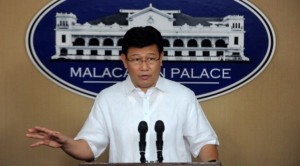Despite improvement, air pollution levels in Metro still high—DENR
MANILA, Philippines — Pollution levels in Metro Manila are still higher than acceptable levels set by law, in spite of improvements recorded in the past 10 years, according to the Department of Environment and Natural Resources.
Environment Secretary Ramon Paje called on the public to support government programs to reduce air pollution, even as he manifested support for a private initiative asking the Supreme Court to compel the government to allot more room on the country’s roads for use by bikers and pedestrians.
According to air quality data from the DENR’s Environmental Management Bureau, the level of total suspended particulates (TSP) in Metro Manila last year reached 118 micrograms per normal cubic meter (ug/Ncm).
The Philippine Clean Air Act of 1999 sets the healthy guideline value for TSP, one of the measures for air pollution, at 90 ug/Ncm per year, and 230 ug/Ncm per day.
But Paje noted that the 2013 figure had actually gone down from 10 years ago, seesawing over the years.
Article continues after this advertisement“In 2004, the TSP was at 171 ug/Ncm. Then it went down to 129 ug/Ncm in 2009, then up again to 150 in 2010,” he said.
Article continues after this advertisementLawyers and civilians representing the “carless people of the Philippines” went to the Supreme Court Monday seeking, the issuance of a “writ of kalikasan” to, among other things, compel the government to devote half of all roads in the country to “an organized and affordabletransportation system” and the other half to be converted into covered sidewalks, all-weather bike lanes and urban gardens.
The objective, according to the petitioners, is to reduce traffic, air pollution, and heat-trapping gases from emissions by motor vehicles.
Paje said that should the high court grant the petition, the issuance of such a writ would “in no uncertain terms inject new vigor into the DENR’s implementation of policies that bear directly on the people’s right to breathe clean air.”
He said the Philippines’ efforts to combat air pollution have actually improved due to various steps initiated by the government and in its partners.
But he admitted that much still needed to be done to achieve a cleaner and healthier air.
“Full and effective implementation of the country’s 14-year-old clean air law is the key to further improve the quality of the air we breathe,” he said.
There is a program promoting the use of clean and alternative fuel, and another proposing the establishment of provincial bus terminals outside Metro Manila to reduce the volume of vehicles on the road.
The EMB has also installed additional fully automated monitoring stations to measure the air pollution level at strategic points around the metropolis, he said.
Paje commended local government units for stepping up efforts at enforcing the provisions of RA 8749.
Along with the EMB and the Metropolitan Manila Development Authority, cities and municipalities in the National Capital Region have formed composite units conducting roadside apprehensions of suspected “smoke-belchers.”
RELATED STORIES
Breathing Metro Manila air now risky–DOH
